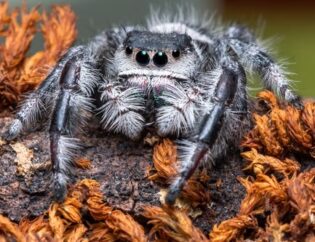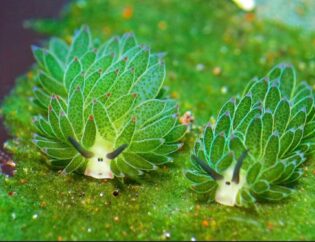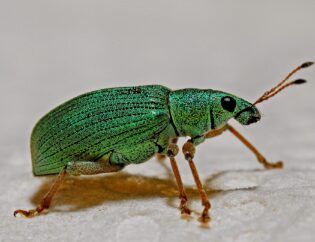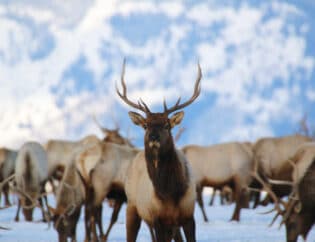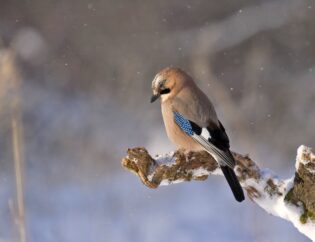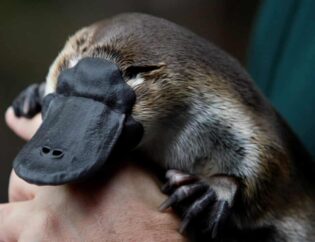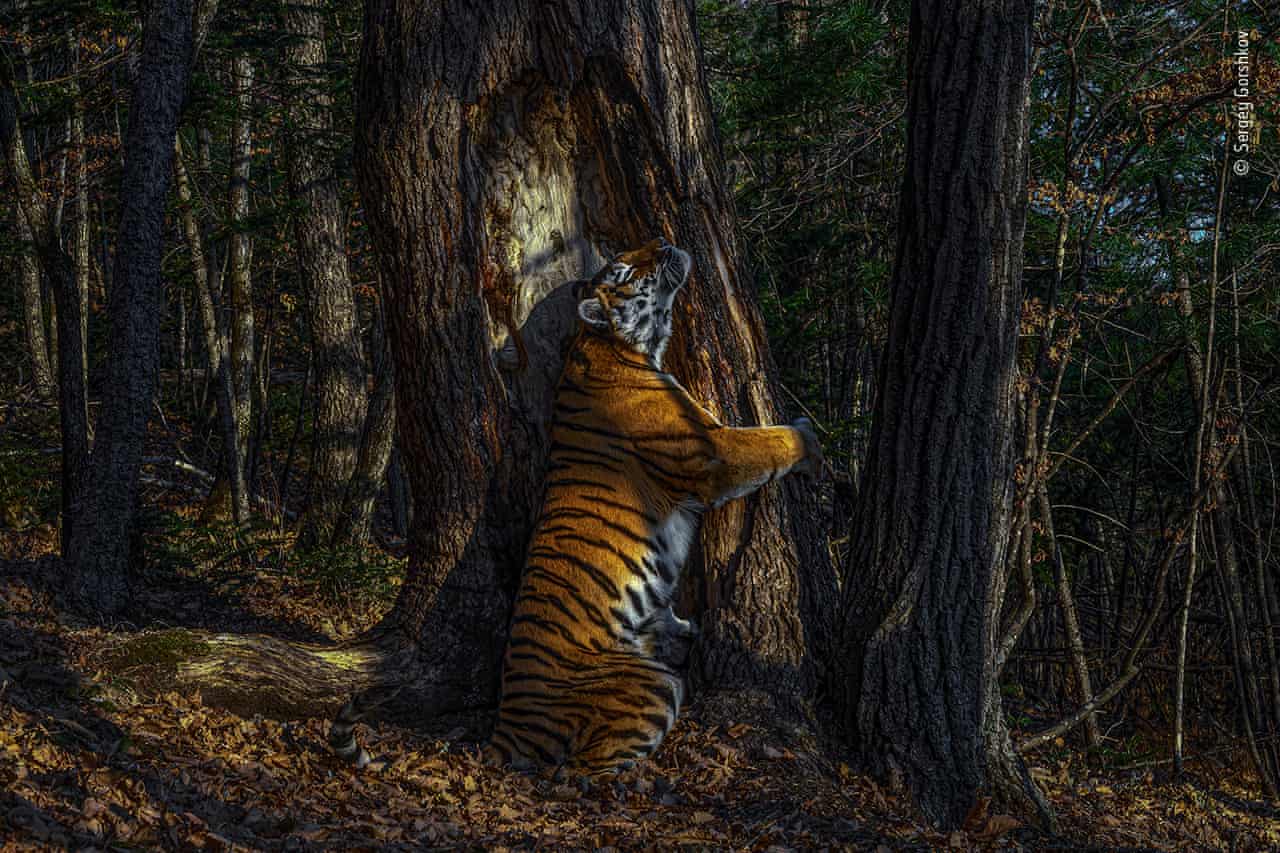
The Guardian | October 13, 2020
A magical image of a Siberian tiger hugging an ancient Manchurian fir tree in a Siberian forest was named the 2020 wildlife photographer of the year by the Duchess of Cambridge at a ceremony at London’s Natural History Museum. The award is one of the world’s most prestigious photography prizes. Photographer Sergey Gorshkov left a hidden camera in a Russian forest for 11 months to capture the big cat.
The image was selected from more than 49,000, with Roz Kidman Cox, the chair of the judging panel, calling the photograph “a unique glimpse of an intimate moment deep in a magical forest”.
Amur or Siberian tigers live in the vast woodlands of eastern Russia with a small number over the border in China and possibly North Korea. Hunted to the verge of extinction, the population is still threatened by poaching and logging, which also affects their prey – mostly deer and wild boar. Recent surveys have indicated that greater protection may have resulted in a population of 500 to 600.


